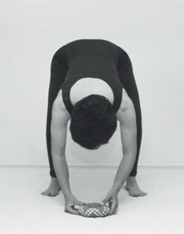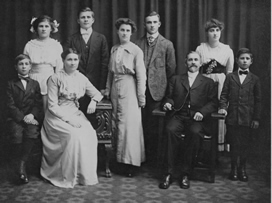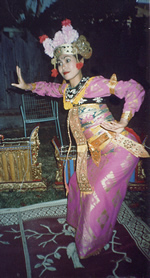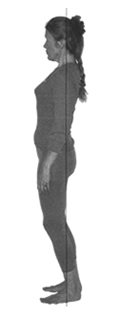About Kentro Body Balance

This Kentro student eliminated her back pain and strengthened her back with centering guidelines.
Thusius's Kentro stretches and strengthening exercises have dramatically improved a number of chronic conditions that have failed to improve during Chiropractic and medical physical therapy. I highly recommend her work.
~Kerby Stewart, M.D., Family Physician (Texas)
The Issue:
Most of Us Suffer from Postural Pain
There are many countries around the world where people do not rely on gyms, sets of exercises and stretches, yoga, fitness, aerobics, postural techniques or therapies, to stay resilient. They are strengthened and stretched through their ordinary activities. In industrialized Greece only 8% of the population suffered from back pain, whether they had desk jobs or did physically active work. (National Journal for Orthopedic Surgeons, Athens 2004) As many as 80% of the population in the U.S. will experience a back problem at some time in their lives. In the U.S., one half of all working people have back problems each year. (American Chiropractic Association) What went wrong?
In the 1920's and '30s, in highly industrialized countries, we can observe the appearance of idealized postural concepts. This conventional approach to posture results in stiffness, weakened muscles and often pain. It is also emotionally distressful because it is based on having to fit ourselves into someone's idea of 'proper' posture. Forcing our bodies into ‘correct posture’ keeps us in a vicious cycle of stressing the joints and overtaxing the muscles. The legs and the pelvis (the main center of the body) are pushed out front, the shoulders are pushed back, and the chin is raised (see image A).

Notice this American family's dropped shoulders and relaxed upright posture.

My grandparents moved with open-bodied expression and relaxed shoulders.
As a result: thighs weaken, belly pouches, buttocks sag, lower spine arches (tightens), and the upper spine over-curves (slouches). The principal cause of this cumbersome stance is a continually strained pelvis. This is not natural. To remedy the lack of tone in pelvic, thigh and back muscles, we reinforce the vicious cycle: we tighten the belly, tuck the pelvis, push up the ribs and chin, and push back the shoulders. We become prone to spinal disc compression and nerve compression throughout the body. Misaligned joints forces our muscles into ‘holding’ patterns (compensations).
The Resolution:
Kentro Practice Restores Natural Strength and Ease –
Your Birthright
Relaxing your body and centering yourself with over 80 Kentro movements, generates optimal bone alignment and frees your tissues to eliminate postural distress and pain. You do not have to give up your lifestyle, improve your posture or imitate someone else's ‘look’. By practicing the Kentro guidelines, slowly and gently, you can sense powerful, graceful motion. You feel your everyday activities limbering and toning you.
We are designed for life-long agility. With Kentro (Greek for "center") practice, we simply relax into our bodies (no tucking or pushing) and view ourselves as pliable clay (see the image captioned "Centered"). Kentro centering aligns our joints and frees our muscles into healthy motion. This is a natural process that allows the entire back to lengthen (straighten). The pelvis regains its natural supportive slant, which frees it to be the area of maximum strength and flexibility. The naturally strong weight-bearing muscles in the pelvis, back and legs can then function harmoniously.
See Free Class for more about Elemental Placement

This centered Balinese dance bends easily from the hips:
her back straightens and her shoulders relax.

